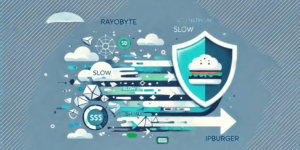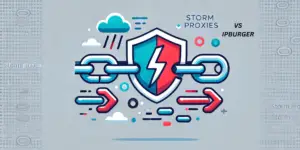Data parsing is converting data from one format (e.g., JSON, XML) to another (e.g., JavaScript Object Notation). This can be useful when you want to store structured data in your application and don’t know how it will look or what it will look like at runtime. Parsing allows you to use a programming language that is more familiar to you, such as JavaScript, instead of using a different language altogether for the same task.
Data parsing is also used for other purposes: for example, if an API returns JSON formatted data. Still, if your program only understands XML formatted data, you would have no choice but to parse the JSON into something your program could understand.
The most common way this happens is through a library called jQuery, which parses HTML documents into DOM elements and then uses those elements in its codebase. This makes it easier for developers unfamiliar with HTML/CSS/JavaScript syntax to work with APIs that return HTML content.
Confused? Then let’s break it down for you.
How does data parsing work?
Data parsing works by parsing raw HTML content into an object model ready to be queried. This process is called mapping or indexation. The output has all the fields mapped with their respective values extracted from the source document/page/email etc.
Why use data parsing?
Some of the most common uses include: Extracting data from websites, emails, and other documents. This is done by parsing HTML content into an object model that can be queried to retrieve the required information. The output will have all the fields mapped with their values extracted from the source document/page/email. It also provides methods to query these objects and retrieve the required information.
These libraries support various queries, including regular expressions, XPath queries, and more advanced techniques like XQuery, which allows you to write custom queries using XML syntax. Most commonly-used languages include Java, PHP, Python, C# .NET, etc.
Several types of parsers are available on the web today; however, they all work similarly: they convert input text into an object structure representing what they find within that text.
The objects represent either nodes or attributes within those nodes (elements). For example, if you have a document containing tags with some content inside them, each tag represents an object node within the resulting structure. They represent everything found within that element’s contents. The tag would be represented as an attribute node containing information about its parent element.
In the following sections, we will cover some of the more popular parsers available on the web today.
Html parsing libraries.
Data parsing HTML libraries are used to parse the HTML content and extract the data from it. They are used to extract data from web pages, documents, emails, or structured text. These libraries can be used for various purposes such as scraping data from websites, parsing email messages, etc.
Beautiful Soup
Beautiful Soup is a Python library for parsing HTML. It’s designed to be easy to use and fast but powerful enough to handle the most complex documents. Beautiful Soup can parse HTML from many sources, including files, URLs, email messages, and even from your clipboard.
The parsing of HTML tags and attributes is done quickly but decisive. This means that Beautiful Soup can handle the most complex documents.
Beautiful Soup has been designed to be easy to use with a simple API for manipulating the document and a full-featured set of classes for working with elements in your document.
Cheerio
Cheerio supports data parsing JavaScript Object Notation (JSON) documents and JavaScript’s native ECMAScript object notation (ES5). In addition to supporting ES5 syntax, it also supports more recent features such as arrow functions in ES6 code blocks. Cheerio’s API is designed to be easy to use and integrate with other libraries. It provides access to the parsed data as a Java Map, an ArrayList, or a stream of JSON objects.
JSoup
JSoup is a library for data parsing HTML and XML documents. It provides an API that allows you to parse HTML, XML, JSON, CSS files and DOM elements. You can use the parser in a variety of ways:
- extract data from the document (e.g., extracting all the links from an HTML page).
- create new documents (e.g., creating a new XML file from scratch or converting an existing HTML file into its equivalent XHTML format).
- validation purposes (e.g., validating forms against their input values).
Puppeteer
Puppeteer is a browser extension that allows you to inspect and modify the DOM of any website. It’s currently available for Chrome, Firefox, and Opera.
How do I use Puppeteer for data parsing?
The easiest way to use it is through the extension’s icon in your browser toolbar: Once installed, you’ll see a new icon in your browser toolbar:
Click on the icon, and they give you a prompt to choose which website to inspect. The first time it’s run, it will ask permission to access all websites currently open in your browser. You can always change this later by clicking the Options button at the bottom of the window:
From there, use Puppeteer Parser just like any other DOM inspector. It works precisely like Chrome Developer Tools or Firefox Developer Tools but is much more potent than either of those tools alone.
Building a parser vs. buying a parser.
Building a parser is not just about creating the parser. It is also about understanding how to use it. This means that you need to understand the grammar of your language and learn how to write a good lexer/tokenizer (which in turn requires knowing enough about regular expressions).
Many people think buying a parser is cheaper than building one from scratch. But this isn’t true: if you buy a parser, it will be installed on your computer for free by whatever software package you are installing at the time. You can then use it without worrying about configuring or installing anything else.
This may sound like an advantage, but most parsers have limitations that make them unsuitable for certain applications (e.g., they don’t support nested structures).
Also, while there are many free parsers, their actions are usually very limited. They cannot handle more complicated grammars than those supported by their base libraries (even these libraries often have restrictions).
And finally, when writing code against such a library, you’ll always have to remember that different versions might behave differently – depending on who wrote them. So unless someone has written tests for their library and documentation explaining what each element does – and why – using such an API could be quite frustrating.
So let’s look at some advantages of making a parser:
- You can write your own parser for a grammar that any library does not support. You don’t have to rely on the limitations of a pre-existing parser, and you can make it as complicated or simple as you want.
- You’ll be able to use it in all your projects without having to worry about portability issues (e.g., if one day someone decides to switch from .NET Framework version 2.0 to 3.5).
- It’s much easier than writing tests for a parser. Since there are no restrictions on what you can do with it, you get complete control over what happens during parsing and how each element behaves when encountered (you might even decide that certain elements should behave differently depending on the context).
- The code will be simpler because many things like error handling, exceptions, etc., are already taken care of by the framework itself (and this way, they won’t needlessly clutter up your code).
- And finally, most parsers come with some restriction: they only support certain grammars or structures within them, whereas making your own parser allows you to create whatever kind of grammar suits your needs best.
Residential proxies.
If you’re parsing scraped HTML data from websites, you may use some automation tools.
Did you know that proxy rotation is crucial to retrieve the right data quickly?
Many websites block web scraping tools if they aren’t using rotating residential proxies. The proxies not only mask their IP address and prevent bans–they can distribute requests among thousands of IPs.
IPBurger offers automatic proxy rotation with unlimited threads and concurrent connections. That means you can rapidly increase data collection and never worry about IP bans.
Check out our web scraping proxies for more details.


